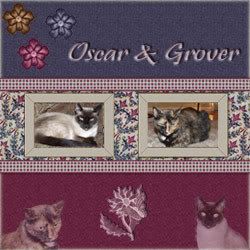Re: Re: Science diet?
Originally posted by Miss Meow
Cuddle her cute kitties 
Seriously, we found Innova dried dog and cat food at a local pet store and it's good quality. I think it's a Pets Paradise, which whitepages.com.au says you have in your state. Give one of the stores a call and see if they stock it. Our store had little sample baggies for $1 so we could try before we bought a larger bag.
I couldn't find Innova on the 'bad' list, so I hope it's animal testing-free.
Oooh, we do have Pets Paradise here in Brissie, might give them a shot. Also, the RSPCA has opened a "pet store" (no pets, just supplies) that is supposed to have good stuff.
As for cuddling my kitties, my Pixie baby is right next to me as we speak and Randi is looking jealous and what's this? He's coming over......
Mum to two little humans, a very vocal 14 year old Ragdoll, and a super energetic and snuggly rescue kitten.
RIP Nibbler, joined the Bridge 12 May 2007.
RIP Pixel, joined the Bridge 24 November 2017.







 Reply With Quote
Reply With Quote







Bookmarks